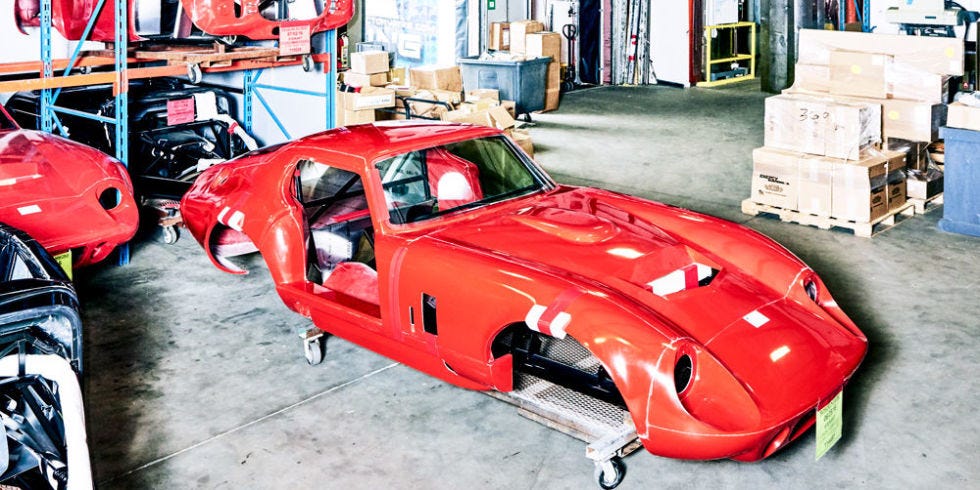How To Make Your Own Vehicle

Alright, let's talk about building your own vehicle. This isn't a weekend project for the faint of heart, but with the right knowledge, tools, and dedication, it's absolutely achievable. This guide provides a roadmap to understand the key systems and components involved. We'll delve into the core principles, not just a step-by-step build manual, because understanding the 'why' is just as crucial as the 'how' when you're creating something from scratch.
Purpose
Why bother understanding the intricacies of vehicle construction? Several reasons spring to mind. First, comprehensive knowledge empowers you to undertake complex repairs and modifications that would otherwise require expensive professional assistance. Second, building a vehicle (or deeply understanding its systems) provides invaluable learning experience. You'll gain a profound appreciation for automotive engineering principles. Third, having your own vehicle gives you full control over the design and specifications, allowing you to tailor it precisely to your needs, whether it's a custom off-roader, an electric commuter, or a unique artistic expression on wheels.
Key Specs and Main Parts
Before we get into the nitty-gritty, let's establish some baseline specs and components. The specific specs will vary wildly depending on your project, but here's a general overview:
- Chassis/Frame: The backbone of the vehicle, providing structural support. Common types include ladder frames (robust but heavy), space frames (lightweight and strong), and monocoque (unibody) designs (where the body itself provides structural integrity).
- Engine/Motor: The powerplant. This could be an internal combustion engine (ICE) – gasoline, diesel, or alternative fuel – or an electric motor (AC or DC). Key specs include horsepower (hp), torque (lb-ft or Nm), and displacement (for ICE). For electric motors, voltage (V), current (A), and power (kW) are critical.
- Transmission: Transfers power from the engine/motor to the wheels. Options include manual, automatic, and continuously variable transmissions (CVTs). Gear ratios are crucial for optimizing performance and fuel efficiency.
- Drivetrain: The system that delivers power to the wheels. Configurations include front-wheel drive (FWD), rear-wheel drive (RWD), all-wheel drive (AWD), and four-wheel drive (4WD).
- Suspension: Provides a smooth ride and maintains tire contact with the road. Common types include independent suspension (each wheel moves independently) and solid axle suspension. Key components are springs (coil, leaf, or torsion) and dampers (shock absorbers).
- Steering: Allows the driver to control the vehicle's direction. Power steering (hydraulic or electric) reduces steering effort.
- Brakes: Stops the vehicle. Disc brakes offer superior performance compared to drum brakes. Anti-lock braking systems (ABS) prevent wheel lockup during hard braking.
- Electrical System: Powers all electrical components, including lights, sensors, and the engine control unit (ECU). Key components include the battery, alternator/generator, wiring harness, and fuses.
- Body: Provides protection for the occupants and components, and contributes to the vehicle's aerodynamics.
How It Works
Let's break down the fundamental operation of a vehicle:
- The engine (or motor) generates power by combusting fuel (in an ICE) or drawing energy from a battery (in an electric vehicle).
- The transmission manages that power, multiplying torque for acceleration and providing different gear ratios for varying speeds.
- The drivetrain channels the power from the transmission to the wheels, causing them to rotate.
- The suspension system absorbs bumps and irregularities in the road, maintaining tire contact and providing a comfortable ride.
- The steering system allows the driver to control the direction of the wheels.
- The braking system uses friction to slow down or stop the wheels.
- The electrical system provides the necessary power for all other systems to function correctly.
Real-World Use – Basic Troubleshooting Tips
Building your own vehicle inherently involves troubleshooting. Here are a few starting points:
- Engine Won't Start: Check the fuel supply, spark plugs (for ICEs), battery voltage, and starter motor. Verify the fuel injectors are functioning, check the ECU for fault codes using an OBD-II scanner.
- Poor Handling: Inspect the suspension components for wear or damage (e.g., worn ball joints, damaged shocks). Check tire pressure and alignment.
- Brakes Not Working Properly: Check brake fluid level, brake pads/shoes, and brake lines for leaks. A soft brake pedal could indicate air in the brake lines, requiring bleeding.
- Electrical Issues: Check fuses, wiring connections, and battery voltage. Use a multimeter to diagnose continuity and voltage drops.
Safety
Safety is paramount when building a vehicle. Here are some critical areas to pay attention to:
- Welding: Wear appropriate protective gear (welding helmet, gloves, apron). Ensure adequate ventilation to avoid inhaling fumes. Use a welding machine suited to the materials and thicknesses you're working with.
- Electrical System: Disconnect the battery before working on the electrical system. Use properly insulated tools. Be extremely careful with high-voltage components in electric vehicles. Improper handling of high-voltage systems can be lethal.
- Brakes: Brakes are critical for safety. Use high-quality components and ensure proper installation. Thoroughly test the braking system before driving the vehicle. Failure of your braking system can lead to serious injury or death.
- Suspension: Use appropriate spring rates and damper settings for the vehicle's weight and intended use. Improperly designed or installed suspension can lead to instability and loss of control.
- Fuel System: Handle fuel carefully and avoid spills. Ensure all fuel lines are properly secured and leak-free. Fuel leaks pose a significant fire hazard.
- Structural Integrity: The frame and body must be strong enough to withstand the stresses of driving and collisions. Use appropriate materials and welding techniques. Failure of the structural elements can lead to catastrophic failure in an accident.
Remember, this is just a high-level overview. Building a vehicle requires a significant investment of time, resources, and knowledge. Consult with experienced professionals and thoroughly research each system before beginning your project. Safety should always be your top priority.
